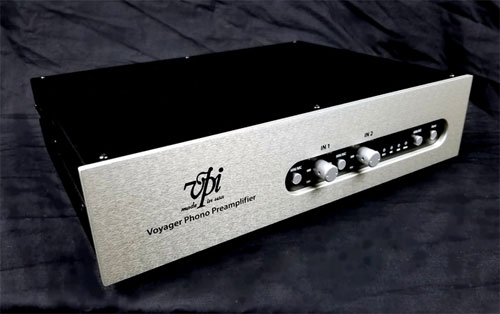The Phono Stage: What it Can Do, and What it Must Do
Available units offer everything from simple, plug'n'play, fixed-value designs, all the way to all-singing, all-dancing products that seek to cover every conceivable base -- at the inevitable cost of such versatility. Which options and facilities matter to you and your system is down to each individual, his system and record collection, but let’s cover the basics first and then the more exotic alternatives on offer. There are several essentials that you should check. Cartridge type – Ensure that the phono stage has the correct input and sufficient gain to match your cartridge. Many, but not all phono stages offer both MM and MC inputs. In addition, MC transformers require connection to an additional MM stage with its associated RIAA correction, so don’t assume that a cartridge and transformer solves your problem. Transformer or active gain? – Like most things in audio, this is a case of swings and roundabouts, with the occasional slide thrown in for good measure. Things are not always what they seem, and just because a phono stage is in a single box it doesn’t mean it uses a single technology. In particular, tube MM circuitry and RIAA EQ are often mixed with either internal transformers or a solid-state (typically J-FET) higher-gain stage for MC cartridges. The bottom line is that the technology employed is less critical than its quality. Concentrate on the performance and facilities on offer rather than the bits they are built out of. Amongst these, overall gain is often overlooked. Any phono stage must have enough gain to work with the chosen cartridge, but the ability to trim the gain to suit allows you to optimize noise performance and is an extremely valuable option. Cartridge loading – For both MC and MM designs. As a generator, the load seen by the cartridge is critical to its electrical damping. Thus, many phono stages offer a range of loading options. This predominantly impacts MC cartridges, where the loading value affects the damping and the signal level produced by the cartridge (the lower the impedance value, the higher the damping and the lower the output). For any given MC cartridge there will be a preferred value, but this will also be influenced by the characteristics of the system as a whole. In other words, this is a key opportunity to tune the performance and integration of your record player and shouldn’t be overlooked. The good news is that it is generally a simple switchable, suck-it-and-see process. As a rule of thumb, lower loads will exert greater control and definition, higher loads will introduce air, dynamics and space. It’s just a question of where on that continuum you need to be. This also explains the fashion, now thankfully receding, for loading MC cartridges at 47k ohms -- the MM standard. This was all to do with getting maximum signal level and air from the cartridge, qualities essential to interfacing them with the medium-gain, tube-based phono sections being used, and exploiting the huge soundstages projected by the large dipole panels on the end of those systems. Nowadays, gain is less of an issue and the range of speakers available offer very different perspectives, so by all means experiment, but there really is no one-size fits all solution. Quite often, MC transformers also offer switchable impedance loading, but the values relate directly to the internal impedance of the matching cartridge and are thus much lower than the equivalents offered by and used with active stages. In fact, don’t assume that a preferred loading value for a given cartridge on one phono stage will automatically transfer to another, while a transformer will typically require values at least 10 times lower -- often considerably more. While MM cartridges are designed to work with a specified 47k-ohm load, their high-frequency extension and energy are impacted directly by the capacitance that they see, so an increasing number of phono stages now offer this option, a facility that allows you to compensate not just for cartridge characteristics but also the capacitance of the tonearm cable, an issue we’ll deal with in more detail separately. But this is not an exclusively MM adjustment, and capacitance value can also trim the typically rising top-end response of many MCs. Again, this is a suck-it-and-see situation, but don’t overlook it if you are plagued by an MC with an overly excitable treble output. |

 he tiny signal generated by your phono cartridge requires a whole extra stage
of amplification when compared to a line-level source like a CD player. But the mechanics
of cutting records also requires that the signal be heavily equalized (literally bent out
of shape) and this manipulation must be reversed by the application of an inverse EQ, also
applied by the phono stage. The accuracy of this inverse EQ, the RIAA curve, is critical
to record replay performance, as are the audio performance and noise levels of the phono
amplification itself. So, your phono stage is right at the center of your record-replay
chain, while the sheer range of possible options available makes selecting the correct
combination particularly important.
he tiny signal generated by your phono cartridge requires a whole extra stage
of amplification when compared to a line-level source like a CD player. But the mechanics
of cutting records also requires that the signal be heavily equalized (literally bent out
of shape) and this manipulation must be reversed by the application of an inverse EQ, also
applied by the phono stage. The accuracy of this inverse EQ, the RIAA curve, is critical
to record replay performance, as are the audio performance and noise levels of the phono
amplification itself. So, your phono stage is right at the center of your record-replay
chain, while the sheer range of possible options available makes selecting the correct
combination particularly important.